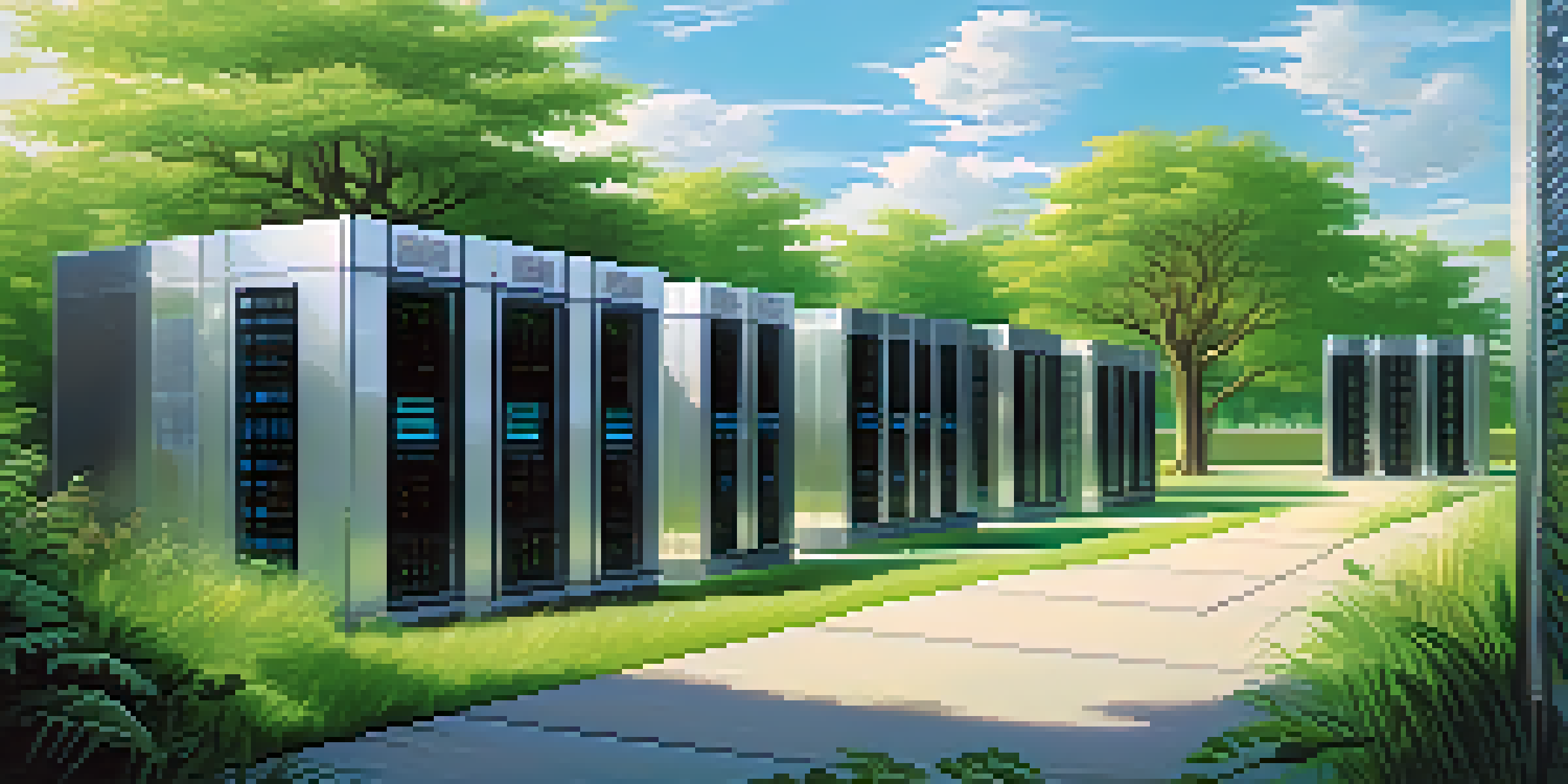Security Challenges in Serverless Computing You Should Know

Understanding Serverless Computing and Its Appeal
Serverless computing allows developers to build applications without worrying about the underlying infrastructure. Instead of managing servers, you can focus on writing code and deploying it effortlessly. This model not only speeds up development but also reduces costs by charging only for actual usage.
Security is not a product, but a process.
However, while serverless architectures offer significant benefits, they also introduce unique security challenges. These can stem from the shared responsibility model, where both the cloud provider and the user play roles in maintaining security. Understanding this division is crucial for effectively managing risks.
Moreover, the rapid deployment cycles inherent in serverless applications can sometimes lead to oversights in security practices. As developers push code quickly, they may overlook essential security measures, making it vital to integrate security into the development process from the start.
Increased Attack Surface in Serverless Environments
One of the most significant challenges with serverless computing is the increased attack surface. With many microservices and functions running independently, each one can potentially be a target for malicious actors. This fragmentation can complicate monitoring and securing every individual function.

For example, if a single function is compromised, it can lead to broader vulnerabilities that affect the entire application. This spread of risk can make it difficult for organizations to protect their data and maintain service integrity. Thus, having a robust monitoring system is crucial.
Serverless Computing Simplifies Dev
Serverless computing allows developers to focus on writing code without the burden of managing infrastructure, leading to faster development and cost savings.
Additionally, because serverless applications often rely on third-party services and APIs, these external dependencies can introduce further vulnerabilities. It’s essential to vet these services thoroughly and ensure they adhere to strong security practices to mitigate risks.
Identity and Access Management (IAM) Concerns
Identity and Access Management (IAM) is critical in any computing environment, and serverless computing is no exception. Poorly configured IAM policies can lead to unauthorized access, potentially exposing sensitive data. Ensuring that only the necessary permissions are granted is a fundamental security practice.
The greatest risk is not taking one.
For instance, if a function has too many permissions, a compromised function could lead to unauthorized actions across your entire cloud environment. It's essential to follow the principle of least privilege, granting only the permissions necessary for a function to operate.
Furthermore, managing IAM across numerous functions and services can become complex and cumbersome. Regular audits and monitoring of IAM roles and policies can help identify potential weaknesses and ensure that access remains tightly controlled.
Data Security Challenges in Serverless Applications
Data security is a primary concern in serverless computing, especially given that data often travels between multiple functions and external services. Ensuring that sensitive data is encrypted both in transit and at rest is vital to prevent unauthorized access. Without proper encryption, data can be vulnerable to interception and exploitation.
Moreover, in a serverless environment, data can be stored in various locations, including cloud storage solutions or third-party databases. This distribution can complicate data governance and compliance with regulations like GDPR. Organizations must implement strict policies to manage data across these different platforms.
Security Challenges in Serverless
The unique architecture of serverless applications introduces various security risks, including an increased attack surface and complex identity management.
To address these challenges, it’s important to use automated tools that help manage data security across the entire serverless architecture. These tools can provide insights into potential vulnerabilities and ensure compliance with security standards.
Monitoring and Logging Difficulties
Monitoring and logging in serverless environments can be particularly challenging due to their ephemeral nature. Functions may run for only a few seconds, making it difficult to capture relevant logs and metrics effectively. Without proper logging, identifying security incidents or performance issues becomes a daunting task.
Additionally, traditional monitoring tools may not be equipped to handle the dynamic scaling of serverless applications. It’s crucial to implement monitoring solutions designed specifically for serverless architectures to gain visibility and detect anomalies in real time.
By employing serverless-aware monitoring tools, organizations can better track function behavior and gather insights into potential security threats. This proactive approach helps in swiftly addressing issues before they escalate into larger problems.
Dependency Management Risks in Serverless Functions
Serverless applications often depend on numerous third-party libraries and frameworks, which can introduce security vulnerabilities. These dependencies may contain flaws that can be exploited by attackers if not properly managed. Regularly updating and auditing these libraries is essential to minimize risk.
For instance, a popular library may receive a security patch, but if your application relies on an outdated version, you could be exposed to vulnerabilities. Establishing a process for dependency management can ensure that your application uses only the latest and most secure versions of libraries.
Proactive Security Measures Needed
Integrating security into the development lifecycle and employing automated tools are essential strategies for mitigating risks in serverless environments.
Additionally, utilizing tools that automatically scan dependencies for known vulnerabilities can help maintain security. This proactive approach can save organizations from potential breaches stemming from overlooked third-party components.
Mitigating Security Risks in Serverless Computing
Mitigating security risks in serverless computing involves a combination of best practices and strategic planning. Organizations should prioritize security from the outset by incorporating it into the development lifecycle, often referred to as DevSecOps. This approach helps ensure that security measures are not an afterthought.
Implementing automated testing for security vulnerabilities during the development process can significantly reduce risks. Regularly reviewing and updating security policies, IAM roles, and monitoring practices will help organizations stay ahead of potential threats.

Moreover, fostering a culture of security awareness among developers can lead to improved practices. Training and resources can empower teams to recognize and address security challenges, creating a more resilient serverless environment.
The Future of Security in Serverless Computing
As serverless computing continues to evolve, so too will the security challenges and solutions. Organizations must remain agile, adapting to new threats and technologies that emerge in this dynamic landscape. Keeping abreast of industry trends and best practices will be crucial for maintaining security.
Emerging technologies like AI and machine learning can play a significant role in enhancing security measures. These tools can help automate threat detection and response, allowing teams to focus on strategic initiatives rather than being bogged down by manual processes.
Ultimately, the future of security in serverless computing will depend on collaboration between cloud providers, developers, and security professionals. By working together and sharing insights, the community can develop more robust security frameworks that can withstand evolving threats.